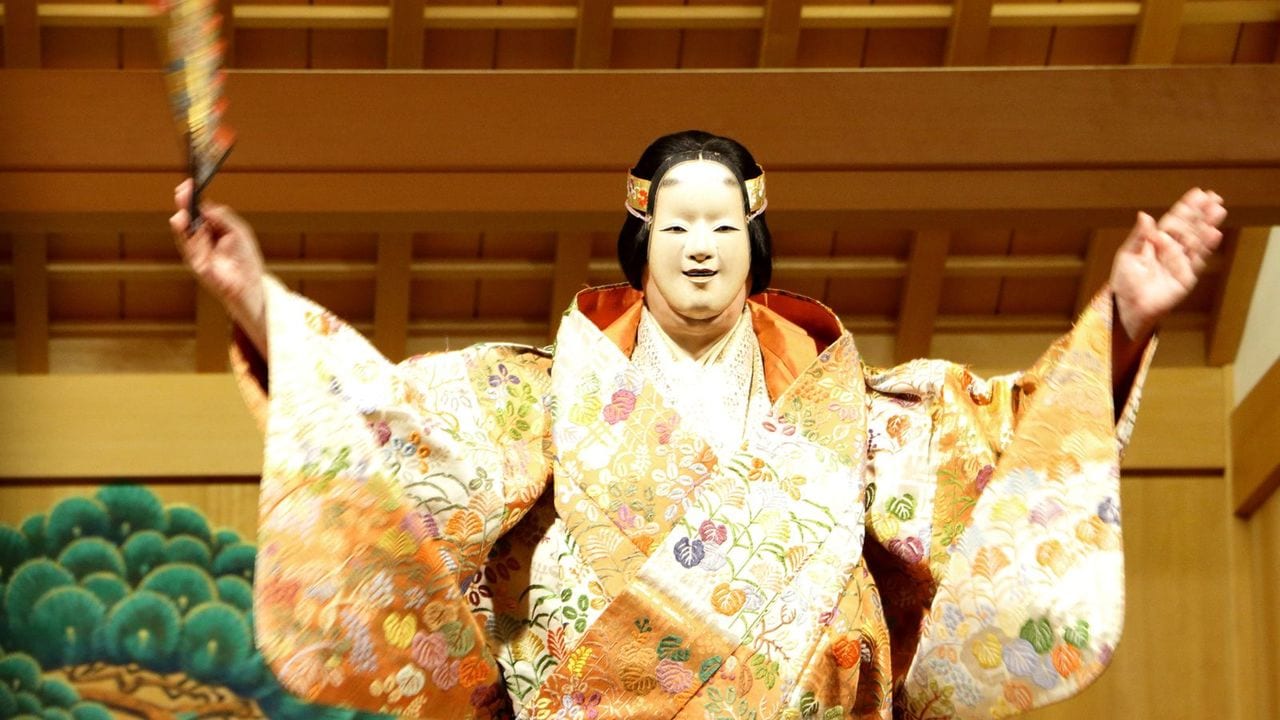
Earlier this year I lectured at the University of Hawai’i on Noh, the traditional dance drama of the samurai of Japan. During the question-answer period, someone asked, “What draws you most to the Noh?” I thought for a moment. “Well,” I said, “I guess the fact that I can relate to the characters.” We laughed then.
He thought I was joking, but I was being honest. “In fact,” I went on, “everything I need to know about doing business in Japan I learned from studying Noh.”
In 1990, I married into a family of licensed performers of Noh and began an intensive study of its music, movement and chant, and later found myself working at the National Noh Theatre. My initial involvement in the world of Noh was for the most part an attempt to impress my then-girlfriend’s parents, an attempt to convince them to let me marry their daughter.
Eventually it worked, but by then I was completely addicted to Noh. It has been a good addiction, the focus of my life and work for many decades.
I have no delusions about being a samurai warrior, but while the world of the samurai was very different from our “modern” life, the problems they dealt with – jealousy, anger, the loss of a loved one - are shockingly similar to our own.
It is possible not only to understand the characters in the plays, but to feel for them and learn from their stories. I returned repeatedly to those stories when raising my sons, to help them address the common difficulties that life throws at all of us.
Almost everything I need to know I learned in kindergarten (and by watching Star Trek)
While it may be true that lessons learned by attending kindergarten and watching Star Trek are applicable in many social situations in the west, they do little to prepare you for the Japanese business world. Noh is not ballet, and doing business in Japan is not the same as doing business in the west.
That said, Noh plays were traditionally also places where important decisions in business and governance were made. Much of what goes on at a Noh play is, shockingly enough, still applicable to business situations today, several centuries later. Looking at what goes on before, during and after a Noh play - in the audience, onstage and backstage - can make often baffling business situations surprisingly comfortable in their predictability.
Everything I need to know about doing business in Japan I learned from studying Noh
Noh was theater for, by and about the samurai warrior class. Warriors were obliged to study the movement and chant of Noh, and they were judged by their ability – or lack thereof- to perform and appreciate the subtle nuances of its poetry.
The Japanese, then as now, had an appreciation for indirectness and subtlety. In Noh plays that feature the ghost of a samurai warrior, for example, the main character dances holding a fan. The fan has the image of a rising sun, a symbol for victory, on one side.
On the other is the symbol of defeat, a setting sun. The side the audience sees depends on whether the character won or lost a battle. Showing the wrong side to the audience during a performance would be a major faux pas.
Similarly, subtle, often unspoken messages of acceptance or rejection – of a project application, for example, or a promotion in rank – were often made through a poem or the placement of a flower or the way in which tea was served. A warrior would be judged by his understanding of the message and his (hopefully equally refined) response to it.
In the Noh play ‘Nue,’ for example, the hero, the samurai warrior Yorimasa, is praised both for his military prowess (his skills in archery) and his poetry.
Japan has a long history of frightening stories, and a fascinating array of monsters (yokai). In the Noh play ‘Nue’, the title character is a monster, a strange amalgam of several animals, including a monkey, a tiger and a snake. It would appear as a black cloud, rise up and float over the Emperor’s residence, sapping his strength and causing him to grow ill.
Yorimasa, called to stand guard, shoots an arrow into the cloud, striking down the Nue and saving the Emperor’s life. The delighted emperor bestowed upon Yorimasa the title of Minister and the sword King of Lions. As he received the sword, a cuckoo cried. With that Yorimasa, the new minister, spoke. “Like the voice of the cuckoo,” he said, “my name has ascended, rising higher even than the clouds.”
Yorimasa, kneeling, threw back his left sleeve. He glanced at the moon and, receiving the sword, recited a verse: “My drawn bow,” he said, “a crescent moon.” Yorimasa withdrew from before the emperor and returned home. He achieved distinction that day as both an archer and a poet.
Introductions and first meetings: The ritual of the meishi
A Noh performance is almost always unique, like a snowflake. The performers come together just once for a single performance. There is often no rehearsal, but everybody knows his or her part, when to come in and where to be. The play itself invariably begins with a straightforward introduction of a supporting character: This is who I am, this is where I’m going and why.
Like the Noh, introductions and first meetings are very ritualized affairs.

Be prepared: For any business situation, it is essential to have many meishi (business cards) ready. Forgetting to bring your business card, or running out, is like forgetting to wear pants. If you are having business cards made, it is acceptable to be creative with the design and color, but it is not a good idea to mess with the size or shape. Most people keep business cards on file for future reference, and round, large or tiny business cards can be very inconvenient.
Offering your meishi: Always offer your business card with both hands, face up, with the bottom toward the receiver so that he or she can read it.
Receiving a meishi: Also receive a business card with both hands. Even if the card is plain and unimpressive, it is important to feign interest. This is an important part of the business card-exchange ritual. Stare at it and nod, making appreciative sounds. Comment of the fine design or quality of the paper, but only if it is truly impressive.
After five seconds or so, put it in a special place. Your shirt pocket is best. There are special business card holders available. If you have one, file away this new business card carefully and put it in your shirt, jacket or hip pocket. Never, never put a business card in your back pocket.
Small Talk: In the Japanese business world, there is a correct time and place for everything. When meishi are exchanged, for example, it is an excellent time to make small talk. This, however, can be problematic, as ‘small talk’ topics – what is acceptable to say or ask – are very different in Japan. To avoid committing a major faux pas, it is essential to know what to talk about and, more importantly, what not to talk about.
Next: First Meetings: What not to talk about




